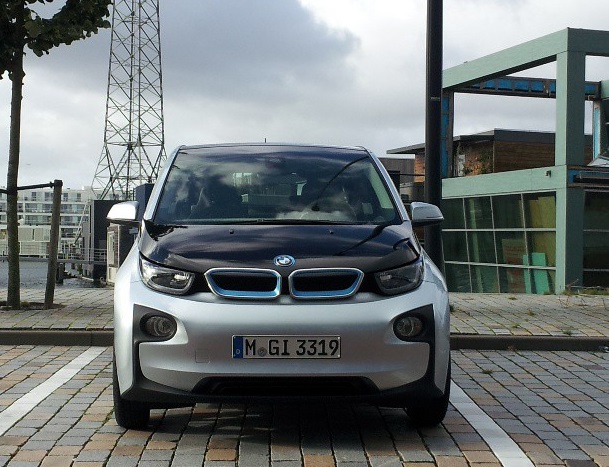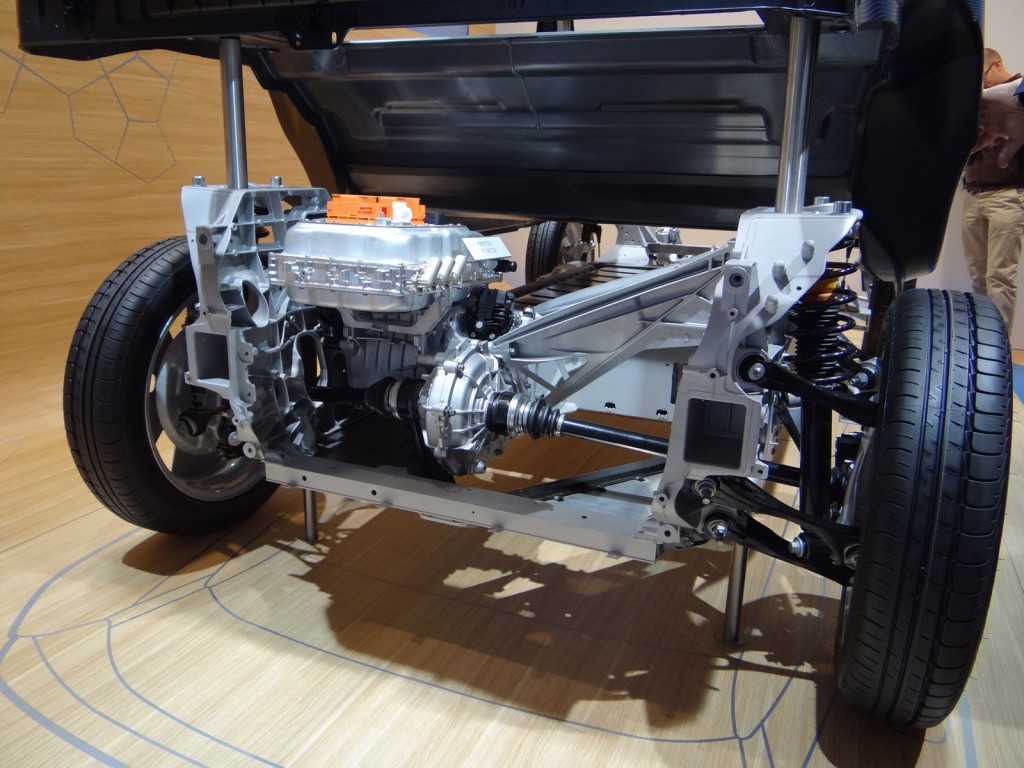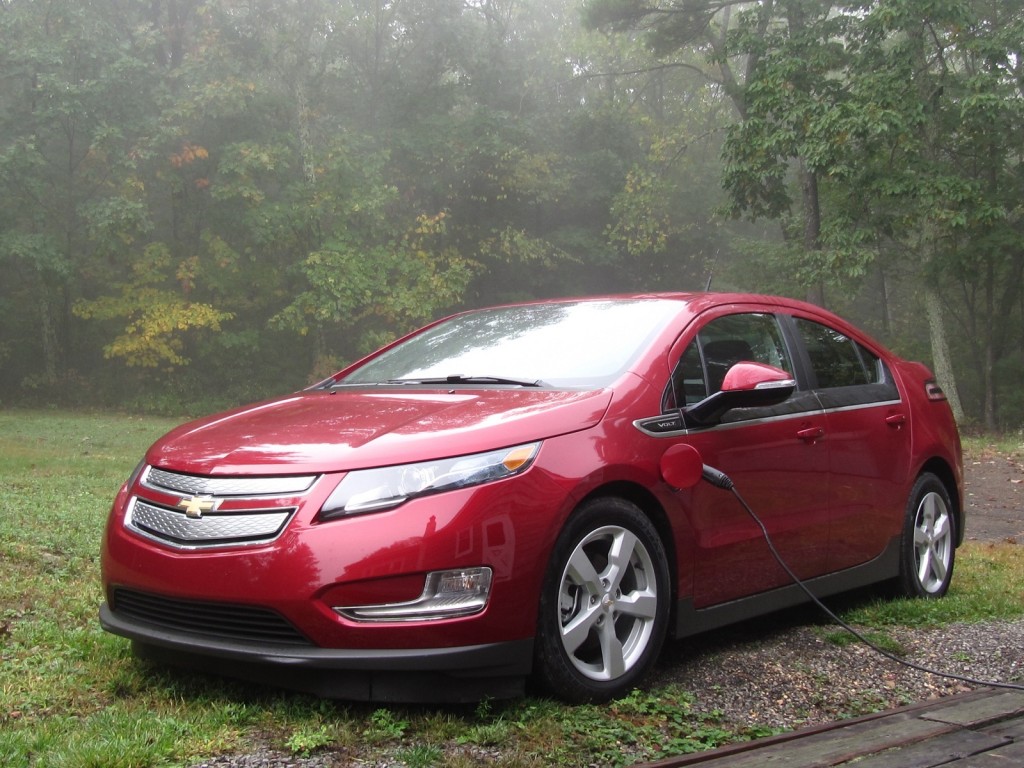
2014 BMW i3 (German-market version), Amsterdam, Oct 2013
The 2014 BMW i3 electric car, which we drove last week, is generating intense interest among both plug-in proponents and BMW fans.
Among other things, it's the first car in the world offered with an optional range-extending engine, at an increased cost of $3,850.
MORE: 2014 BMW i3: First Drive Of BMW's Radical New Electric Car
But versions of the BMW i3 that are fitted with the range extender have been very specifically designed to meet California regulations on what it deems the "auxiliary power unit."
The APU, which maintains battery charge at about 30 percent after the pack has been depleted in normal use, is strictly limited in the additional range it can provide.

2014 BMW i3, 2013 Frankfurt Auto Show
According to rules adopted in March 2012 by the California Air Resources Board (CARB), the 2014 BMW i3 with a REx unit fitted will be the first car to qualify as a "BEVx," or range-extended battery-electric vehicle.
That's described as "a relatively high-electric range battery-electric vehicle (BEV) to which an APU is added."
Not a plug-in hybrid
And it's quite a different animal from plug-in hybrids or an electric car like the Volt, which offers a gasoline range up to 10 times as long as its electric range before you have to refill the tank.
The objective, CARB says, is "not to develop a PHEV with universal appeal, but rather, to expand the market for BEVs by adding an option for a 'backup' APU and enable a class of near-ZEVs that achieve greater than 90 percent" reduction in emissions.
These vehicle offer "substantially more electric range than currently announced [plug-in hybrids], and ... electric range comparable to full-function battery-electric vehicles."
Those lesser vehicles are grouped in the "TZEV"--or transitional zero-emission vehicle--category. (NOTE: This definition modifies what was previously termed an enhanced advanced-technology partial zero-emissions vehicle, or eAT-PZEV).
Isn't regulation fun?

2013 Chevrolet Volt, Catskill Mountains, Oct 2012
Not a Volt, either
The TZEV description applies to both range-extended electric cars like the Chevy Volt and the growing number of plug-in hybrids, including the Ford C-Max and Fusion Energi models, the Honda Accord and Toyota Prius Plug-In Hybrids, and more to come.
But the BMW i3's designation as a BEVx imposes all-new and very specific requirements.
Summarizing from the lengthy 112-page regulation, 2012 Amendments to the Zero Emission Vehicle Regulations, the BEVx definition says (among other criteria):
- The vehicle must have a rated all-electric range of at least 75 miles (higher than the 50 miles required of a zero-emission vehicle);
- The auxiliary power unit must provide range less than, or at most equal to, that battery range;
- The APU must not be capable of switching on until the battery charge has been depleted;
- The vehicle must meet "super ultra low emission vehicle" (SULEV) requirements; and
- The APU and all associated fuel systems must comply with zero evaporative emissions requirements.

2014 BMW i3 (German-market version), Amsterdam, Oct 2013
The fuel tank on the range-extended BMW i3 has a capacity of 2.4 U.S. gallons. That would imply a fuel efficiency rating in range-extended mode of no more than 31 mpg (if electric range is 75 miles) to 37 mpg (with a 90-mile electric range).
Limits on speed, power?
Interestingly, a suggestion by CARB staff that the power output of the APU be limited did not make it into the final regulation.
The following language appears in the earlier draft, 2012 Proposed Amendments to the California Zero Emission Vehicle Program Regulations, but not in the final version.
Though not required, manufacturers are expected to incorporate further performance limits on charge sustaining APU mode operation, including speed restrictions. The intent of the backup APU is not to charge the battery, but rather, to enable the vehicle to drive to a charging station. BEVxs will fit the needs of drivers who are looking for an improved regional driving capability, but not for use in long-distance driving.

2014 BMW i3, 2013 Frankfurt Auto Show
In other words, the BMW i3 will apparently not have a speed limiter or imposed limits on the output of its range-extending engine. BMW has not yet released final power or torque figures for the range extender.
MORE: 2014 BMW i3 Electric Car: Full Details And Images Released
Whether or not performance is compromised in range-extending mode--which BMW has said is "not for everyday use"--remains the biggest unknown about BMW's electric car.
At the global media drive last week, a BMW powertrain executive said that i3 users would see virtually no difference in performance between battery and gasoline operation.
Even during a 12-mile uphill grade of 5 percent at highway speeds with four people in the car, he said, passengers wouldn’t notice any difference in performance.
Real-world data sought
The regulations note that CARB will require manufacturers of both BEVx and TZEV cars to provide CARB with data on how they're actually used in the real world.
The board also wants to study how they're used in multi-car households with other vehicles running on gasoline.
That information will let it reassess the regulations (now in effect through 2025) after large numbers of these cars are in use on California roads.

2012 Toyota Prius Plug-In Hybrid, production version road test, San Diego, CA, Jan 2012
Plug-In Prius vs Volt
The specific question will likely be whether the presence of an auxiliary engine encourages more driving on gasoline than on the battery.
While that's almost surely the case with many Prius Plug-In Hybrids (which have an electric range of just 11 miles, only 6 of it continuous), it's not the case with the Chevy Volt.
That car has a rated electric range of 38 miles, and roughly two-thirds of all miles in Volts are covered on grid power--not by burning gasoline.
Who else?
The CARB regulation also notes that in addition to BMW, two other automakers supported the creation of the new BEVx vehicle category: Chrysler and Volkswagen.
Hmmmmmmmmm.
[hat tip: Matthew Nelson]
_______________________________________________













